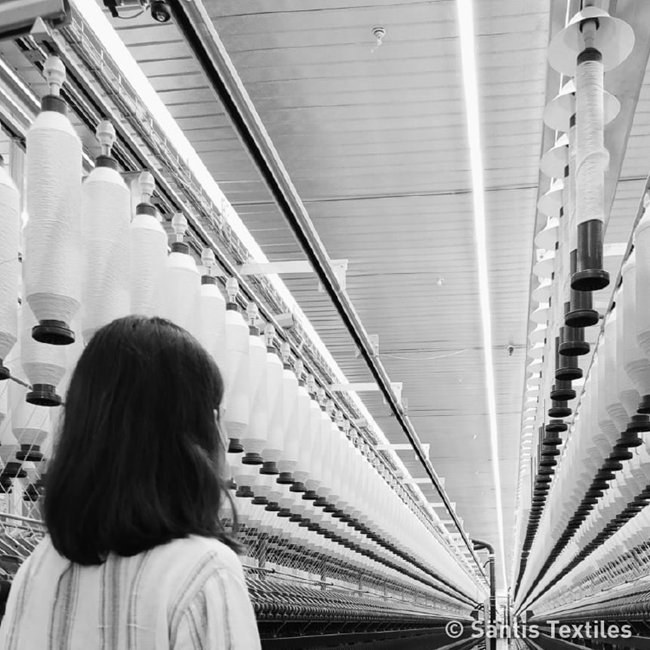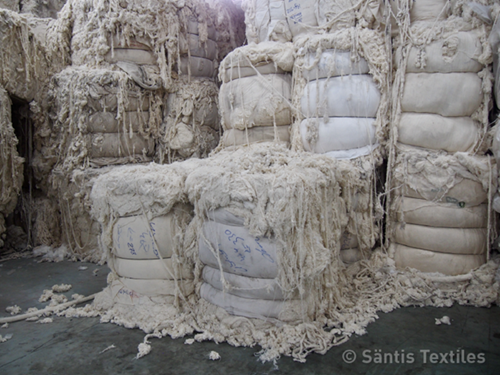It's time for positive action for Europe's fibres industry

16 22
September 2027
Messegelaende HannoverGermany

According to the latest report from the Textile Exchange, cotton production in 2020 was around 26 million tons.
In the cotton spinning process, a waste rate of between 3-5% is standard and in the subsequent weaving and knitting processes there is a further minimum of 3% waste generated, so even before considering apparel after its useful life, there is a considerable volume of cotton fibre – approaching three million tons – that can be recovered, regenerated into new yarns and reintroduced into the textile processing supply chain.
We estimate that less than one percent of this waste is currently being recycled.
For fabric manufacturers, the biggest benefits of using recycled cotton are the ability to attain higher yields along with reducing waste and the subsequent savings this results in, the potential to introduce new ranges of products, promote innovation and improve the company’s image in respect of sustainability.
A reputation for sustainable achievements is meanwhile perhaps even more important to the consumer-facing brands, the majority of whom have made Corporate Social Responsibility (CSR) commitments and set ambitious goals for more sustainable production. Just as importantly, however, is the opportunity successfully regenerated cotton allows for the introduction of innovative products based on premium quality raw materials, especially those that are GRS (Global Recycling Standard) certified.
The ability to trace the progress of premium recycled cotton through the supply chain and guarantee authenticity is becoming increasingly important, and in addition to working with GRS-certified material suppliers and carrying out proprietary audits, fibre recycling specialists are increasingly employing third party tracer technologies. Block chain technology is enabling companies to make products unique and allowing the consumer to trace back product through the entire supply chain. There is increasing collaboration too, with brands and their end consumers, via interfaces that showcase the entire supply chain.

Gradually introducing more post-consumer waste into products is not without its challenges, because at present, there is often only limited knowledge about the original raw material and how many times a garment has been washed. Contamination is another issue and it is always necessary to separate carefully and then blend accurately, based on extensive know-how and an equally extensive database, in order to achieve the best possible ratios and yarn results.
A very gentle mechanical fibre opening process, avoiding damage as much as possible, is a must.
Much of the recycling obstacle for post-consumer cotton waste is down to the use of blends with synthetics, but we have now developed a solution, for example, for extracting elastanes mechanically from core yarns in denims and other cotton fabrics.
In mechanical recycling it is also possible to recycle cotton/polyester blends into the same blend ratio and then use pre-consumer cotton and recycled polyester to reproduce 100% recycled yarns in the same/similar blend ratios as the original materials.
Garment design is a big factor in enabling better recycling, and here inclusion, communication and education are the keys. Costs, of course, are also important, and polyester blends and 100% polyester are often used to reduce costs, as well as improving fabric performance in specific market segments, such as workwear for example.
A certain amount of mechanical stretch can also be achieved in 100% cotton with high twist and particular fabric constructions, and other properties such as tensile strength, elongation and pilling, along with longer wash cycles, are being achieved technically.
These may result in a higher initial cost, but result in a longer lifetime of the garments, which is a compromise that brands can successfully communicate to the consumer.

Annabelle Hutter, Creative Director, Säntis Textiles
About Annabelle Hutter
Annabelle Hutter is the Creative Director of Säntis Textiles, a family-owned textile company based in Singapore, with an extensive network of offices and mill partners. In recognition of her continued work in sustainable business practices, she received the coveted Rising Star award at the Textile Exchange Sustainability Conference in 2021. Since 2016, Santis Textiles has been developing 100% recycled cotton yarns based on a process called RCO100. In 2021, through its partnership with brands such as Tommy Hilfiger, Calvin Klein and Lacoste, the company recycled a record-breaking 100,000 tons of cotton waste.
Subscribe to our mailing list and stay up-to-date with news and developments in ITMA and the textile and garment industry.